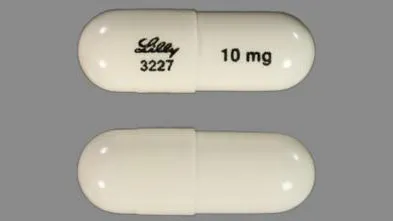Strattera Adderall Interaction, When managing attention-deficit/hyperactivity disorder (ADHD), Strattera and Adderall are two commonly prescribed medications. While both are effective treatments, they work in different ways and carry distinct risks—especially when used together. This article explores the Strattera Adderall interaction, including how these drugs function, potential side effects, and whether combining them is safe or advisable.
What Is Strattera?
Strattera (atomoxetine) is a non-stimulant medication approved by the FDA for the treatment of ADHD in both children and adults. It works by selectively inhibiting the reuptake of norepinephrine, a neurotransmitter that plays a key role in attention and impulse control. Unlike stimulants, Strattera is not considered habit-forming and typically has a slower onset of action.
What Is Adderall?
Adderall is a stimulant medication that combines amphetamine salts. It is one of the most widely used drugs for ADHD and narcolepsy, known for its quick onset and effectiveness in boosting focus, attention, and energy. Adderall works by increasing the levels of dopamine and norepinephrine in the brain.
Strattera and Adderall: Key Differences
| Feature | Strattera | Adderall |
|---|---|---|
| Type of drug | Non-stimulant | Stimulant |
| Active ingredient | Atomoxetine | Amphetamine salts |
| Onset of action | Slower (can take weeks) | Fast (30-60 minutes) |
| Abuse potential | Low | High |
| FDA-approved for | ADHD | ADHD, Narcolepsy |
Can You Take Strattera and Adderall Together?
Using Strattera and Adderall simultaneously is not a common practice, but in certain cases, healthcare providers may prescribe both. The Strattera Adderall interaction is generally considered non-severe, but it requires close monitoring. Here’s why:
- Increased Side Effects: Both medications affect norepinephrine levels, which may amplify side effects such as increased heart rate, anxiety, insomnia, or high blood pressure when taken together.
- Overlapping Effects: Combining them could result in overstimulation or conflicting responses in the brain, making it difficult to determine which medication is causing what effect.
- Unpredictable Responses: Every individual reacts differently, so what works for one person may not work—or could even be harmful—for another.
What Do Experts Say?
Most experts advise trying one medication at a time and only considering combination therapy if monotherapy (a single medication) is not effective. A healthcare provider might add Strattera to Adderall if a patient experiences late-day “crashes” or symptoms that aren’t fully managed by Adderall alone.
However, this approach is off-label and should only be pursued under strict medical supervision.
Possible Side Effects of Combining Strattera and Adderall
- Increased heart rate or palpitations
- Elevated blood pressure
- Nervousness or agitation
- Trouble sleeping
- Gastrointestinal discomfort
- Mood swings or irritability
Final Thoughts
The Strattera Adderall interaction is complex and highly individualized. While both medications can be effective for ADHD, combining them is not routine and should only be done under a doctor’s guidance. If you or a loved one is considering this combination, it’s essential to consult with a qualified healthcare professional who can monitor side effects and adjust treatment accordingly.
As always, never start, stop, or mix ADHD medications without medical advice.
If you’d like, I can help optimize this article for SEO or adapt it for a blog, newsletter, or social media post. Just let me know!




